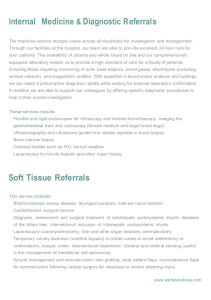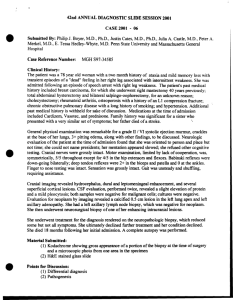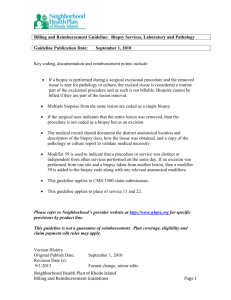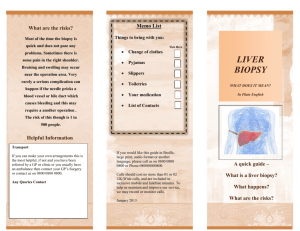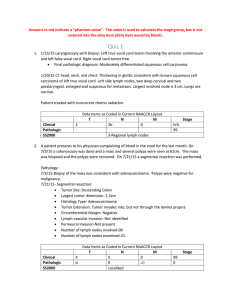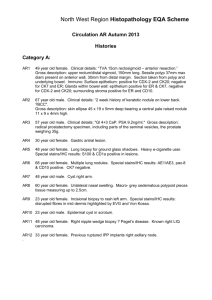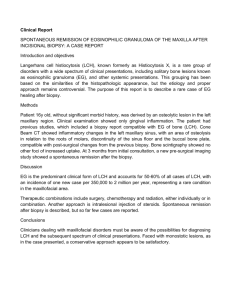Management of Solitary Pulmonary Nodule
advertisement
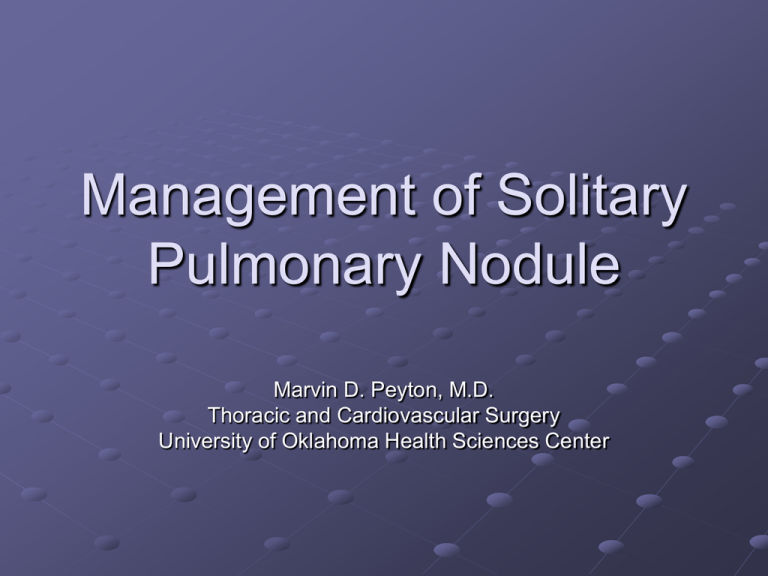
Management of Solitary Pulmonary Nodule Marvin D. Peyton, M.D. Thoracic and Cardiovascular Surgery University of Oklahoma Health Sciences Center Chest X-Ray Seek old films Allows for general assessment of quantity and quality CT Scan Allows more qualitative and quantitative assessment of nodule Allows assessment of mediastinum for adenopathy and invasion, as well as chest wall for invasion Allows assessment of liver and adrenal and thoracic skeleton PET Scan Allows assessment for likelihood of malignant process Allows assessment of other foci of metastatic disease MRI Important to differentiate involvement with vascular structures, as well as brachial plexus in the thoracic apex May be more sensitive than PET scanning Bronchoscopy Diagnosis by direct observation, biopsy and appropriate brushings and washings, as well as assessment of endobronchial tree for satellite lesions Biopsy Transthoracic Transbronchial Mediastinoscopy Assessment of metastatic disease to mediastinal lymph nodes Ultrasound-Guided Transbronchial or Transesophageal Biopsy of Mediastinal Adenopathy Preoperative assessment Blood gas assessment pO2>65 pCO2<65 Spirometry FEV1 MVV Cardiac Ultrasound Cardiac Catheterization Right and left heart catheterization for assessment of coronary integrity, left ventricular function and right heart function by pressure analysis Surgical Treatment Wedge excision for biopsy or definitive therapy Lobectomy Pneumonectomy Lymph node sampling and dissection for staging Prognosis by tumor classification Stage IA – 85% cure Diagnostic Sputum analysis
